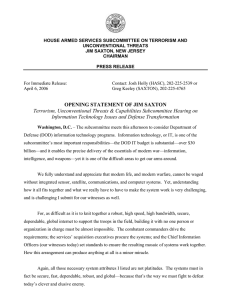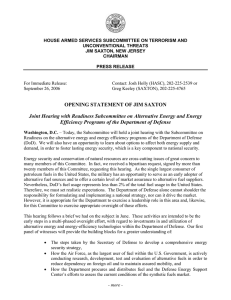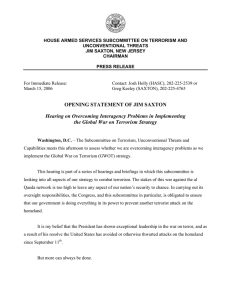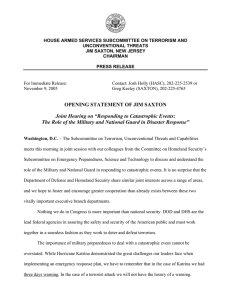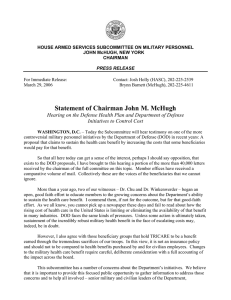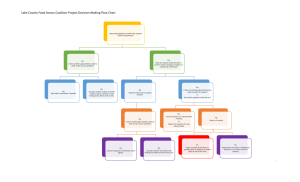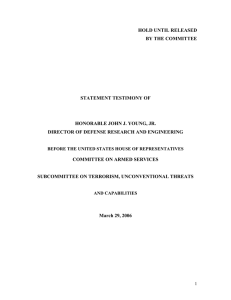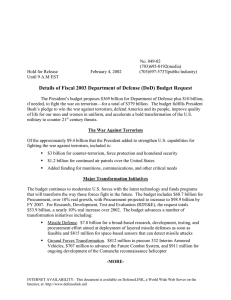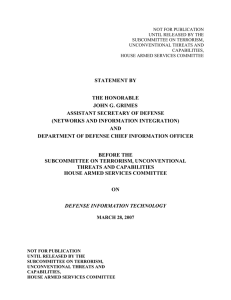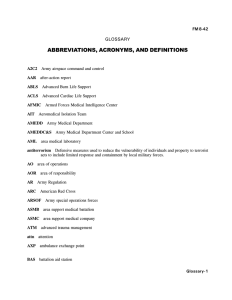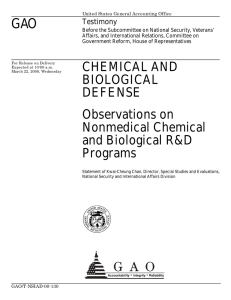HOUSE ARMED SERVICES SUBCOMMITTEE ON TERRORISM AND UNCONVENTIONAL THREATS
advertisement
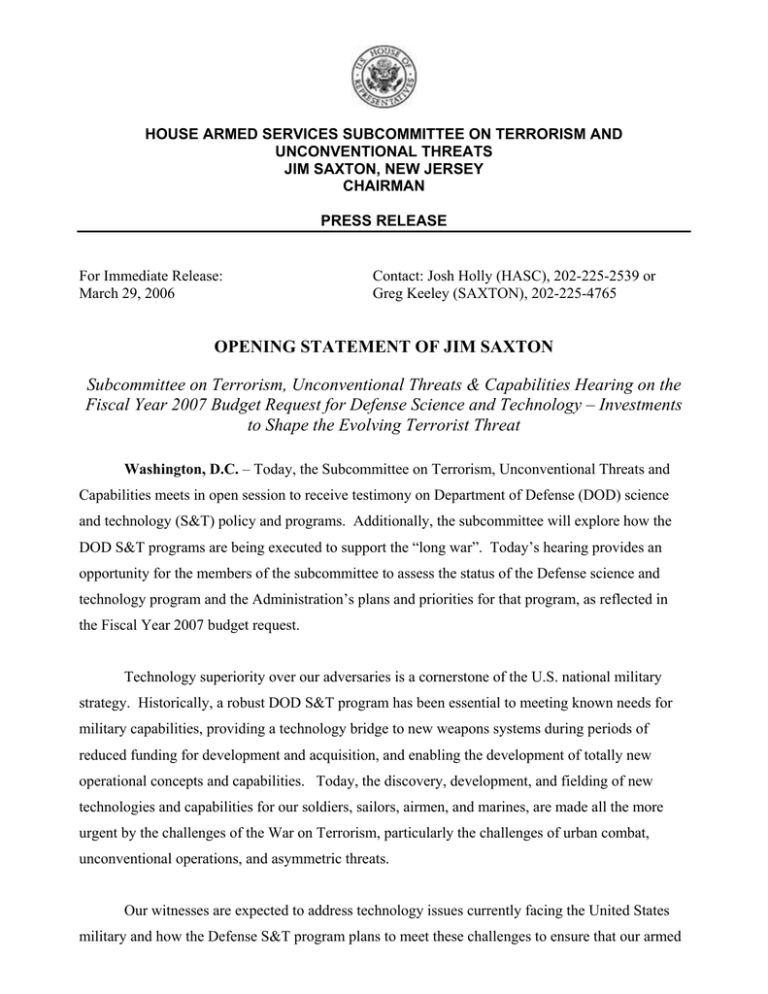
HOUSE ARMED SERVICES SUBCOMMITTEE ON TERRORISM AND UNCONVENTIONAL THREATS JIM SAXTON, NEW JERSEY CHAIRMAN PRESS RELEASE For Immediate Release: March 29, 2006 Contact: Josh Holly (HASC), 202-225-2539 or Greg Keeley (SAXTON), 202-225-4765 OPENING STATEMENT OF JIM SAXTON Subcommittee on Terrorism, Unconventional Threats & Capabilities Hearing on the Fiscal Year 2007 Budget Request for Defense Science and Technology – Investments to Shape the Evolving Terrorist Threat Washington, D.C. – Today, the Subcommittee on Terrorism, Unconventional Threats and Capabilities meets in open session to receive testimony on Department of Defense (DOD) science and technology (S&T) policy and programs. Additionally, the subcommittee will explore how the DOD S&T programs are being executed to support the “long war”. Today’s hearing provides an opportunity for the members of the subcommittee to assess the status of the Defense science and technology program and the Administration’s plans and priorities for that program, as reflected in the Fiscal Year 2007 budget request. Technology superiority over our adversaries is a cornerstone of the U.S. national military strategy. Historically, a robust DOD S&T program has been essential to meeting known needs for military capabilities, providing a technology bridge to new weapons systems during periods of reduced funding for development and acquisition, and enabling the development of totally new operational concepts and capabilities. Today, the discovery, development, and fielding of new technologies and capabilities for our soldiers, sailors, airmen, and marines, are made all the more urgent by the challenges of the War on Terrorism, particularly the challenges of urban combat, unconventional operations, and asymmetric threats. Our witnesses are expected to address technology issues currently facing the United States military and how the Defense S&T program plans to meet these challenges to ensure that our armed forces have the technologies required for success on both today’s and tomorrow’s battlefields. The subcommittee hopes to explore: • The impact of the Quadrennial Defense Review on the Defense S&T program; • The Department’s plans to implement recommendations of the Defense Science Board to develop a strategic technology plan; • The tradeoffs the services may be making between funding for current operations and S&T; • How we balance accelerating the transition of technology from the laboratory to the military user in the field, with the need to mature technologies sufficiently prior to entering major acquisition systems; • How the Department plans to build upon the success of rapid reaction technology development programs, such as Quick Reaction Special Projects, by capturing feedback from military users in the field to make iterative improvements to technologies deployed in support of the War on Terror; • How the Department identifies and protects military critical technologies in an age of rapid technology change; • How DOD links the identification of military critical technologies and efforts to sustain the DOD industrial base; • The appropriate levels of funding for the Defense S&T program and for basic research accounts, in particular; • How the Department’s basic research program fits into the President’s American Competitiveness Initiative. The hearing will conclude with a closed briefing at the SECRET level to allow the subcommittee to assess the efforts of the DOD S&T program to invest in mid- and long-term technologies that either shape the future terrorist technological threat or serve as proactive countermeasures to the future terrorist technological threat, as discussed during a threat briefing held this morning. ### http://armedservices.house.gov/
